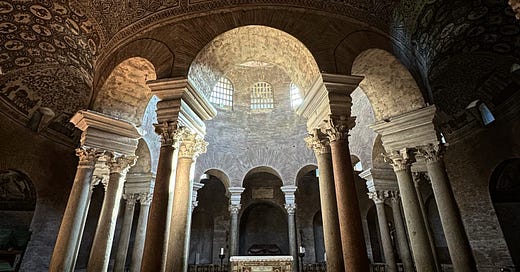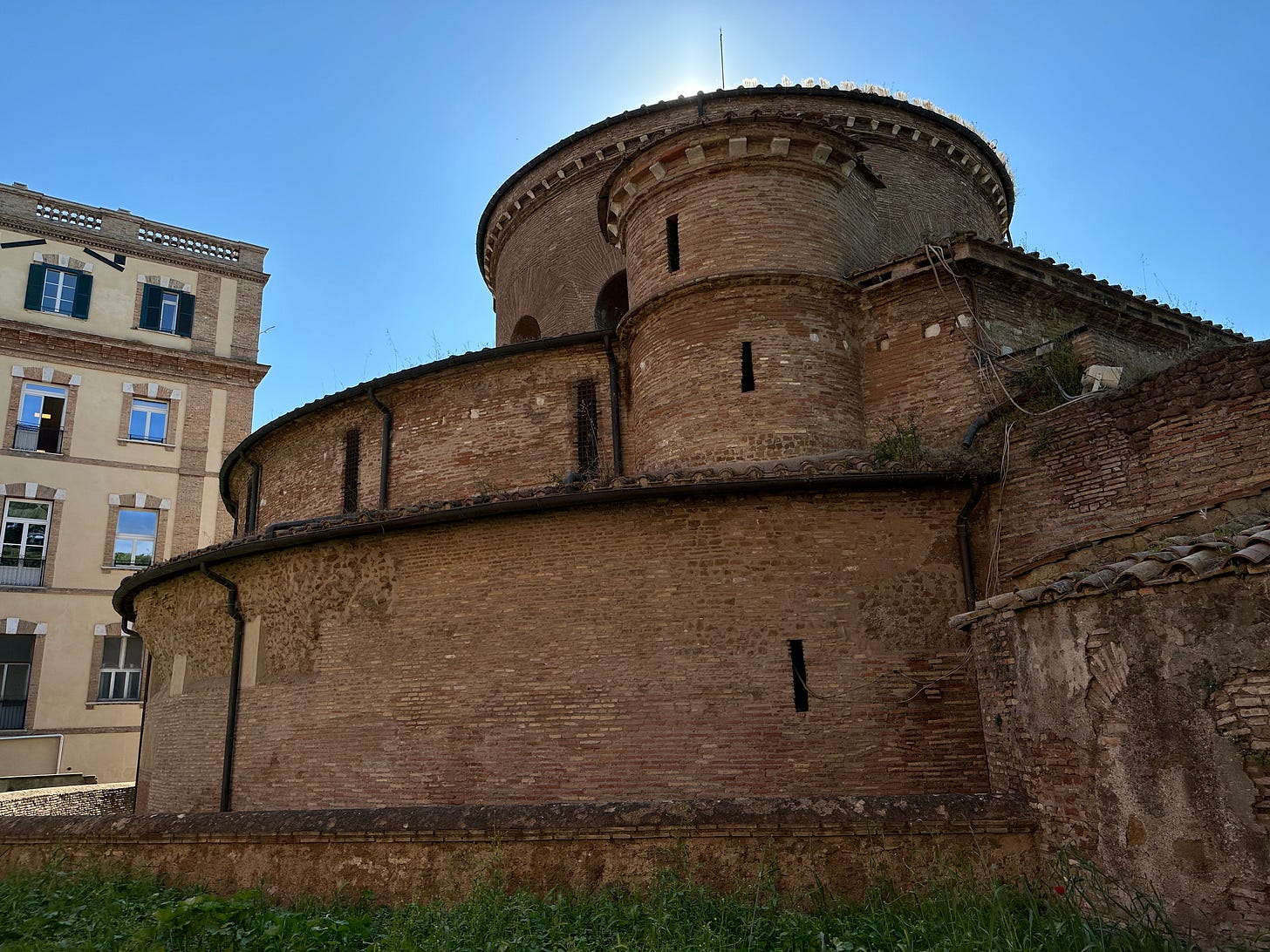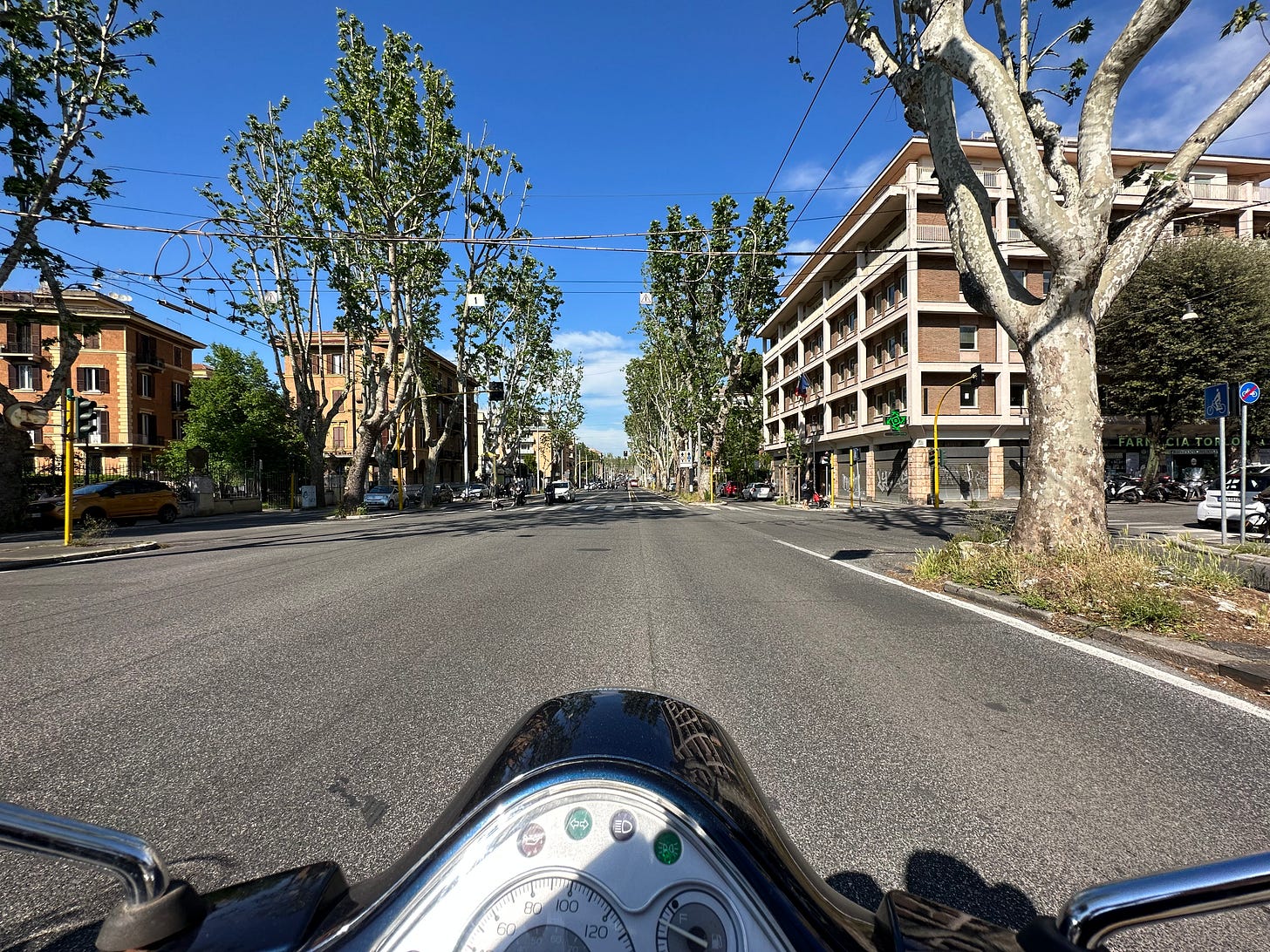I’m rereading, for the umpteenth time, Elizabeth Bowen’s splendid memoir A Time in Rome. It was first published in 1959 and describes a three month period she spent in Rome between late winter and spring in an unnamed year. She writes evocatively of the fleeting, fragmented, multiple histories of the city—of the jostling of the everyday and the timeless—beautifully evoking the disruptions of chronological time, and the perpetual piercing of the past through the tenuous present.
One place which makes me think of A Time in Rome is Santa Costanza on the via Nomentana, which always strikes me as one of the immovable posts around which the rushing waters of time hurtle; a fixed point untouched by temporal eddies.
At weekends it’s a popular spot for weddings and christenings which, whilst lovely and intriguing from an anthropological perspective, rather impede a visit. But go mid-week and it could be almost any time in the last one and a half millennia. I usually go on the way back from the dentist, because combining errands with paleochristian archeology is very much my bag.
Keep reading with a 7-day free trial
Subscribe to Understanding Rome's Newsletter to keep reading this post and get 7 days of free access to the full post archives.






